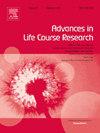Linked lives and convoys of social relations
Abstract
We consider linked lives through the Convoy Model of Social Relations to illustrate their complexity, consequences, and development across contexts. To illustrate how the Convoy Model lens provides a unique opportunity to examine the multidimensional and dynamic character of linked lives across time and space, we analyze twenty-three years of longitudinal data from the Social Relations Study (SRS). The SRS is a regionally representative Detroit-area sample (N=1,498) with three waves (1992; 2005; 2015) of data from community dwelling people age 13 to 93. We present three illustrative examples of linked lives: 1) the influence of earlier life social network characteristics (size and closeness) on later life health outcomes; 2) the influence of social position (race and education) on relationship quality with spouse/partner and child over time; and 3) the influence of transitioning from working to retirement on network structure (size and geographic proximity). Findings illustrate linked lives through multiple instances of social relationships and as influenced by various contexts. Further, the consequences of linked lives for mental health are consistent across the life course while influence on physical health is variable. The Convoy Model presents key concepts to situate the ways in which linked lives form and function at various levels and across multiple contexts to have far reaching effects on life outcomes.

 求助内容:
求助内容: 应助结果提醒方式:
应助结果提醒方式:


